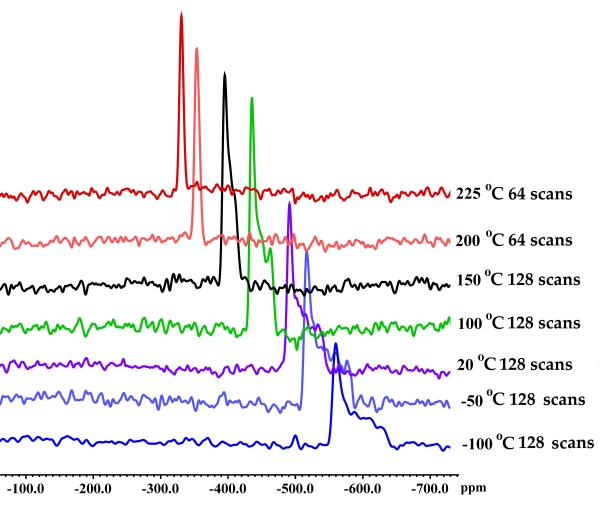Special NB Wideline 3 mm H/X Probe to 250 ºC
(The NB probe is shown below. It also has the ultra low 1H background option)
The Ceramic Housing and Coil Support Enables:
– High Temperature Operation
– Protection of the Coil and Sample
– Minimal Background Signals
– (Ultra Low 1H Background Option)
High-power decoupling
5 μs 1H π/2 pulse at 600 MHz with 230 W
2.5 μs 13C π/2 pulse at 150.9 MHz with 350 W
H/X Double-tune Broadband (or H/X/Y)
Extended VT range: NB -110 °C to 250 °C
A wide bore version of this probe is available
with XVT range: WB -110 °C to 320 °C
Sample temperature measured by 207Pb(NO3)2 chemical shift

To illustrate the capability of a novel 3 mm H/X wideline narrow bore probe with extended VT range, we performed a variable temperature experiment on Pb(NO3)2 over the temperature range from -110 °C to +250 °C. Those data are summarized in figure below. The first thing that is apparent is the isotropic chemical shift is changing as a function of temperature. These data match the well-known temperature dependence reported by Bielecki and Burum (JMR 1995). Secondly, comparing the powder lineshape at the lowest temperature to that any of the higher temperature data illustrates the onset of molecular motion. The nitrate ligands are moving, and this motion is averaging the shielding tensor of the Pb2+ ion. Finally, note the highest temperature reported here is 225 °C; the high temperature limit for the probe is actually 250 °C.


